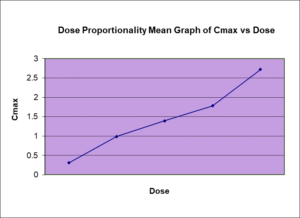Mastering Clinical Trial Documentation: Understanding the TMF and the ISF in Clinical Research

In clinical research, careful and organized documentation is crucial to maintaining trial integrity and participant safety. Essential documents encompass a range of documents that individually and collectively enable the evaluation of the conduct of a clinical trial and the quality of the data produced. Different methods and regulations are used to conduct the clinical trials data, including the most common ICH E6 guidance and the DIA TMF Reference Model.
Both Master Files (TMF) and Investigator Site Files (ISF) play critical roles in ensuring regulatory compliance, study quality, participant safety, and the overall integrity of the trial, which are key aspects of essential documents. These files contribute to maintaining a clear record of the trial’s progress, adherence to protocols, and transparency for regulatory authorities during audits and inspections.
Most are familiar with the TMF, which contains high-level clinical trial documents for an overview of the entire trial’s progress at all participating sites. It encompasses the entire trial and provides a global overview from planning to closeout. However, the ISF contains site-specific documents in greater detail, reflecting on-site execution. It focuses on documents specific to the clinical trial site’s activities and responsibilities. The TMF and the ISF share many of the same documents, but there are important differences.
In this blog, we’ll dig into what the TMF and the ISF are and highlight the key differences between the two, explore the International Council for Harmonisation of Technical Requirements for Pharmaceuticals for Human Use (ICH) E6 guidance and the Drug Information Association (DIA) TMF Reference Model as a guide to prepare and maintain the TMF, and the requirements of regulatory guidance such as U.S. Food and Drug Administration (FDA), European Medicines Agency (EMA) and Health Canada in the preparation of the TMF.
Understanding the Trial Master File (TMF) and the Investigator Site Files (ISF):
Defining TMF:
The TMF is a comprehensive collection of essential documents and records related to a clinical trial’s planning, conduct, and management. It is a single, centralized repository that provides a complete and auditable record of the trial’s progress. The TMF ensures that regulatory requirements are met and plays a pivotal role in demonstrating the trial’s integrity during inspections and audits.
Defining ISF:
The ISF is a collection of documents and records maintained by the investigator and their site staff at each clinical research site. It ensures that all site-related documents are well-organized, up-to-date, and readily accessible. The ISF provides a localized perspective of the trial’s execution and contributes to the overall integrity of the trial.
Table 1 provides the key components that must be incorporated into the TMF and the ISF, while also pointing out which documents are unique to ISF.
| Key Contents as Applicable to Study | TMF | ISF |
| Table of contents | X | X |
|
Clinical Trial Protocol and Amendments Clinical Trial inform consent forms (ICFs) Investigator Brochures |
X | X |
|
Regulatory approvals and correspondence with regulatory authorities Ethics committee or institutional review board (IRB) approvals, correspondence and close-outs |
X | X |
| IRB-approved Advertisement for participant recruitment | X | |
| Document that the IRB/IEC is constituted in agreement with GCP | X | X |
|
Sample case report form (CRF/eCRF) Signed, dated and completed CRF/eCRF |
X | X |
|
Financial agreement between the investigator/institution and the sponsor for the trial Clinical Trial agreements and contracts Insurance (where applicable) Financial disclosure forms, including any conflicts of interest |
X | X |
|
Investigator, Sub-investigators and site personnel CVs, medical licences and qualifications Documentation of training and qualification of site personnel, including study-specific training and GCP training |
X | X |
|
Normal values and/or ranges of the medical/laboratory/technical tests Document the competence of the facility to perform the required test(s), and support the reliability of results |
X | X |
| Samples of labels(s) attached to investigational product container | X | |
|
Certificates of analysis (for investigational products)
|
X | |
| Document instructions needed to ensure proper storage, packaging, dispensing and disposition of investigational products and trial-related materials | X | X |
|
Drug/device accountability records Drug/device shipping, handling and storage records Drug/device labelling and packaging documentation |
X | X |
| Document method for randomization of the trial population | X | |
| Pre-trial monitoring report: document that the site is suitable for the trial | X | |
| Trial initiation monitoring report | X | X |
| Records of monitoring visits, including monitoring visit reports and follow-up letters | X | |
|
Correspondence between the site and the sponsor or contract research organization (CRO) Minutes of site meetings, such as site initiation, interim monitoring, protocol violation and closeout meetings |
X | X |
|
Serious Adverse Event (SAE) reporting documentation Copies of SAE submitted to the sponsor and ethics committee or IRB Risk Management Plan |
X | X |
|
Safety data Safety committee meeting minutes Periodic safety reports Annual Safety report |
X | |
| Interim or annual reports provided to IRB/IEC | X | X |
| Subjects screening logs | X | X |
| ICFs and any required assent forms signed by study participants | X | |
|
Participant files Source documents Subject identification code list Subject enrollment logs |
X | |
|
Data management plan Data validation and quality control reports Statistical analysis plan |
X | |
| Audit Certificate | X | |
| Final close-out monitoring report | X | |
| Archiving and retention records | X | X |
Table 1
In summary, ISF is part of the TMF. Hence, there will be common documents which are filed in the ISF and TMF. While the TMF offers a comprehensive view of the entire trial’s documentation, the ISF provides a detailed account of site-specific activities. By maintaining both these files meticulously, sponsors can ensure that their clinical trials are conducted ethically and in adherence to regulatory standards. For this purpose there are two methods of data maintaining: the ICH E6 guidance and the DIA TMF Reference Model which will be discussed further.
It’s essential to ensure that the TMF is well-organized, complete, and up-to-date, regardless of whether the trial is single-site or multi-site. When there are multi-site trials, there will be a central TMF at the sponsor’s location or a Contract Research Organization (CRO) contracted by the sponsor, and each participating site, will maintain a site-specific TMF. The central TMF will include:
- Master Regulatory Documents: Regulatory documents that apply to the entire trial, such as the master protocol and central ethics committee approvals.
- Overall Monitoring and Oversight Documents: Documents related to central monitoring and oversight activities that pertain to all trial sites.
- Safety Reports: Summaries of safety data and adverse event reports from all sites, along with any safety analysis documents.
- Clicial Trial Data Management and Biostatistics Documents: Documents related to data management, statistical analysis, and data handling for the entire trial.
- Clinical Study Report: The central clinical study report summarizes the results of the trial across all sites.
Each participating site will maintain a site-specific TMF containing documents specific to that site, such as informed consent records, site initiation documents, and site-specific monitoring records.
Exploring ICH E6 Guidance and the DIA TMF Reference Model
Two key pillars in the field of TMF preparation are the International Council for Harmonisation of Technical Requirements for Pharmaceuticals for Human Use (ICH) E6 guidance ICH E6 (GCP)“ and the Drug Information Association (DIA) TMF Reference Model (DIA TMF Reference Model). It’s worth noting that to better understand ICH E6 (GCP), it’s valuable to read ICH E8(R1) “General Considerations for Clinical Studies” alongside ICH E6 (GCP).
ICH E8(R1) was developed to promote consistency and quality in the design and conduct of clinical trials, with the ultimate goal of ensuring that the data generated from these trials are reliable and can support regulatory decision-making for the approval of new pharmaceutical products.
The index or structure of the TMF in the context of Good Clinical Practice (GCP) can vary based on different factors, including regulatory guidance, industry standards, and organizational preferences. Both the ICH E6 guideline and the DIA TMF Reference Model offer suggestions for structuring the TMF, but they have some differences in their approach and granularity. Let’s explore this further:
ICH E6, also known as the “Guideline for Good Clinical Practice” (GCP), is a globally recognized standard that provides general recommendations for the organization of essential documents within the TMF. It offers guidance on what types of documents should be present in the TMF, but it does not prescribe a specific detailed structure. ICH E6 emphasizes the importance of maintaining essential documents to support trial integrity and regulatory compliance.
The DIA TMF Reference Model is an industry-specific tool designed to offer a more granular and structured approach to organizing the TMF content. It provides a detailed framework with various categories and subcategories for organizing documents and metadata, fostering consistency and facilitating collaboration across sponsors, CROs, and regulatory authorities.
- Standardized Categories: The DIA TMF Reference Model categorizes TMF content into standardized sections, such as study management, regulatory documentation, and investigator site documentation. This categorization aligns with the ICH E6 principles and helps sponsors and stakeholders navigate the TMF more efficiently.
- Metadata and Cross-Referencing: The model promotes the use of metadata, which are data that provide information about other data. Metadata enables enhanced searchability and cross-referencing within the TMF, making it easier to locate and verify documents, thus supporting the data integrity principles of ICH E6.
- Collaboration and Inspection Readiness: By following the DIA TMF Reference Model, organizations enhance their collaboration potential and streamline communication among teams involved in TMF preparation. Moreover, the structured approach facilitates faster and more accurate responses during regulatory inspections.
There might be similarities in terms of the types of documents that both the ICH E6 guideline and the DIA TMF Reference Model recommend including in the TMF, but the level of granularity and detail can differ between these two. Organizations often evaluate these guidelines and models based on their specific needs, regulatory requirements, and desire for standardized documentation practices.
In some cases, organizations might even blend aspects of both the ICH E6 guidance and the DIA TMF Reference Model to create a customized approach that suits their specific needs.
Ultimately, the decision to follow ICH E6 guidance, the DIA TMF Reference Model, or a combination of both will depend on a thorough assessment of regulatory expectations, industry standards, study complexity, and organizational preferences. It’s important for organizations to select an approach that ensures regulatory compliance, enhances trial quality, and facilitates efficient documentation management.
Regulatory Requirements
The requirements for the TMF among different regulatory agencies, such as the FDA, the EMA representing the European Union (EU), and Health Canada are very similar, and they follow the ICH E6. However, there can be minor differences due to variations in regional regulations, guidelines, and expectations.
While the fundamental purpose of the TMF remains consistent – to provide a complete and accurate record of a clinical trial – the specific documentation and organization requirements may vary. Here’s a general overview of some potential differences:
- FDA: The FDA provides guidance documents such as the “Guidance for Industry: Oversight of Clinical Investigations-A Risk-Based Approach to Monitoring”. While the FDA does not prescribe a specific TMF structure in this guidance, it emphasizes the importance of maintaining essential documents related to the trial’s conduct, including regulatory approvals, informed consent forms, study protocols, and monitoring reports.
- EMA: The EMA has guidelines such as “Guideline on the content, management and archiving of the clinical trial master file (paper and/or electronic” , “Guideline on computerized systems and electronic data in clinical trials” and the “Guideline on Good Clinical Practice” (ICH E6) Annex 7 that specifically addresses TMF requirements. The EMA’s TMF expectations are outlined in Annex 7 of ICH E6, offering a structured framework for TMF organization. It provides detailed categories and subcategories for organizing essential documents.
- Health Canada: Health Canada offers guidelines such as the “Guideline on Good Clinical Practice” (ICH E6)” and the “Guidance for Clinical Trial Sponsors.” Health Canada’s guidelines do not provide the specific TMF structure, but they emphasize the need for documented evidence of compliance with GCP principles, including proper maintenance of essential trial-related documents.
Why Choose BioPharma Services for Your Next Drug Deveopment Project?
Mastering TMF and ISF is very important for ensuring the success of clinical trials. These files serve as the backbone of regulatory compliance, study quality, study participant safety, and overall trial integrity.
To navigate the complexities of TMF preparation effectively, organizations can turn to key guidance sources, including ICH E6 and the DIA TMF Reference Model. The decision to follow ICH E6 guidance, the DIA TMF Reference Model, or a blend of both depends on factors like regulatory expectations, industry norms, study complexity, and organizational preferences.
It’s also important for sponsors, investigators, and other stakeholders to be familiar with the specific TMF requirements of the regulatory agency overseeing the clinical trial. Organizations often adapt their TMF practices to align with regional regulations and guidance, ensuring that their TMF meets the expectations of the regulatory authorities.
Written By: Negar Gharavi, Senior Director Medical Writing & Regulatory Affairs



